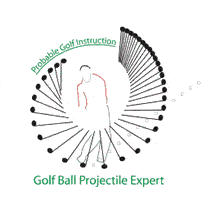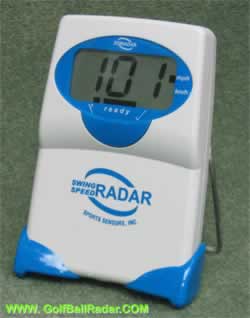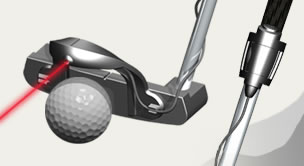
|
|
|
Golf Playing LessonsFrom this page, you can access playing lessons for various parts of the game. Click on the topics below and you'll be taken to the appropriate place in the website. Look below the navigation menu (the one below this sentence) for the specific page's content.
The Best Golf Ball for Your Golf GameEvery golfer desires a golf ball that is long off the tee, has great spin so that the ball stops on the green, great feel so that the short game is the best it can be, and is inexpensive. Unfortunately, such a golf ball does not exist. If you want a golf ball that has great spin and feel, you need to fork out a few bucks. If all you want is distance and durability, then you can purchase the inexpensive golf balls. There are a number of balls out there, however, that have the desired qualities at a medium price. If you want good distance, spin and feel at a moderate price, take a look at the following golf balls:
Prices are those sited by golfballs.com . You can purchase them.Click
here now. that you play a ball with great spin and feel. You need significant spin to stop the ball on the green, close to the flag, especially with the wedge (your scoring club). You also want significant feel around and on the green. A softer covered ball that will give you the added feel necessary, especially on fast greens. So, if you can afford it, you want to play the top of the line golf balls. Here are the best ranked in terms of distance, feel and spin.
Used Golf Balls -- Can they still be longest golf balls?Golf Digest did an interesting study which it announced in its May/05 issue. They had Golf Laboratories test several balls with their launch monitor and computer-controlled robot using a 10-degree Callaway driver and Titleist NXT golf balls. The balls varied in condition, though. In the table below are the results for the different conditioned balls. All distances are in yards. Dispersion is the yardage off-line, left or right of the target.
You may have purchased my statistical analysis study on the "Longest Golf Ball." In it, I compare different golf ball distances (when hit by a mechanical hitting machine; Iron Byron) statistically. Golf Digest did not provide the number of balls hit and the individual distances of each trial, so one cannot determine the statistical significance of the difference between balls. For instance, the total distance for a New ball is 250.3 yards while a Scuffed ball is 244.5 yards, a difference of 5.8 yards (or 2.3%). How much that distance is by chance (not all balls are the same and conditions vary) and how much is due to the "scuffs" on the ball, cannot be determined with confidence. From my experience with golf ball testing, typically a difference of at least 3% is required before one can declare some likelihood in there being a signficant difference. None of the ball distances in the above table are significantly different from one another by more than 3%. These differences could be due just to chance. See my page on the "Longest Golf Ball" for more detail on what is meant by significant difference due to chance. The long and short of the Golf Digest test is that no one ball (brand new or used and scuffed) is significantly longer than the other. If there is any significant difference, it's between the amounts of dispersion. The "Grass" and "Mud" balls tended to have significantly more dispersion than the others. Balls that have significant grass or mud on them would have non-symmetric dimple patterns and weightings (one side of the ball is slightly heavier than the other). Such asymmetry would cause the ball to "wobble" and go offline more. So, just make sure you keep your golf balls clean whenever possible. There is really no significant advantage to playing a new ball over a used ball, as long as you're aware of how used it is. The Golf Digest tests only tested one round old balls. Over the course of many rounds, a golf ball will lose its ability to compress and expand efficiently and will go less far. Most golfers don't need to worry about that because they lose their balls before they get too old. If you find a ball or by used balls, beware that they may not be as long for the following reasons: † The ball may have spent
a significant time in water. The covers of golf balls are pourous and will
absorb water; this changes the viscoelasticity of the cover and the golf
ball will fly significantly less far. In my opinion, playing a Titleist Pro V1 that you found (as long as it looks relatively new and has likely been recently lost) is better than a new hard golf ball, like a Top-Flite. If you have any questions or comments, feel free to email me at golfexpert@probablegolfinstruction.com ©Probable Golf Instruction, Ken Tannar 2001-2011. All Rights Reserved. Langley, B.C. V2Y 2G4Phone: 604-539-7760 FAX: to fax, email an attachment probablegolf@yahoo.ca or golfexpert@probablegolfinstruction.com |
| GOLF SOFTWARE |
|
Power Meter measures Swing Speed
|
| GOLF NEWS |
|
| GOLF NEWSLETTER |
Statistics
·Putting
·Long Balls
·Games
·Handicap
·Scoring
·Shot Patterns
·Tournaments
·Tours
Pro Shop
·Ball Marker Engraved
·Books
·CDs & DVDs
·Green Reader
·Impact Labels
·Laser Rangefinder
·Longer Drives
·Products
·Teaching Aids
|
Subscribe to the Probable Golf Newsletter
and
|
| GOLF POLL |
The 19th Hole
·Advertising
·Ask the Golf Expert
·Consultation/Litigation
·FAQs
·Golf Blog
·Golf Draws
·Links
·Science of Golf
·Tell a Friend
·Testimonials
·

Golf Ball Finder Glasses
·
| GOLF CARTOON |






